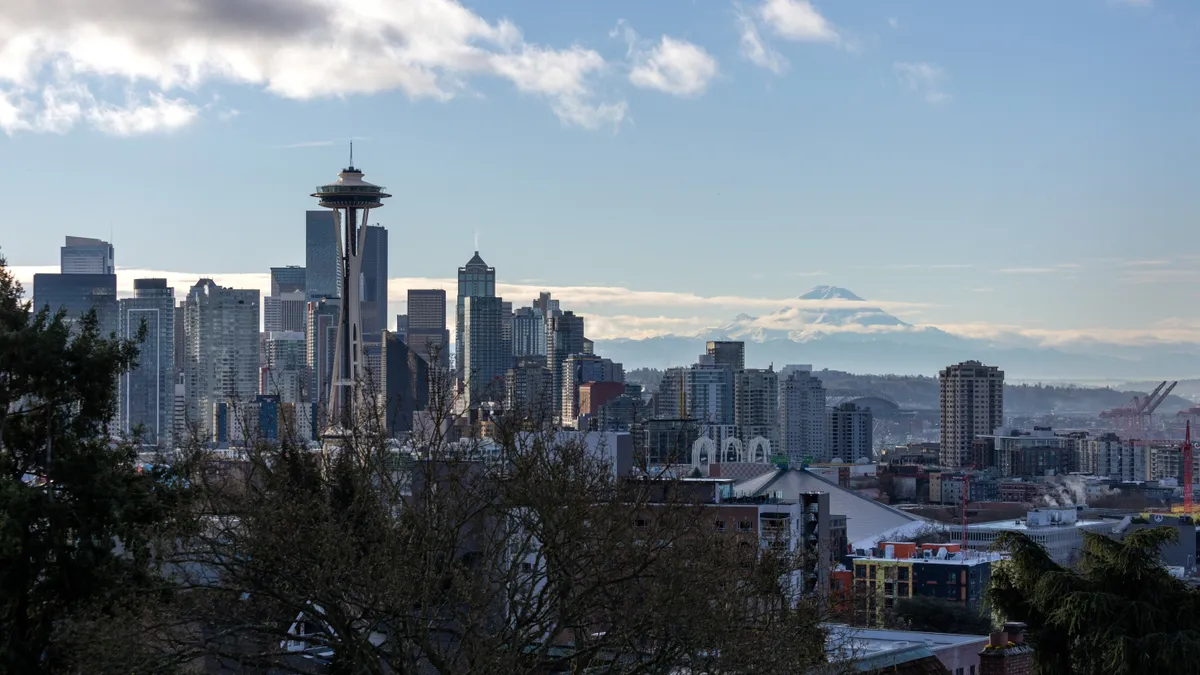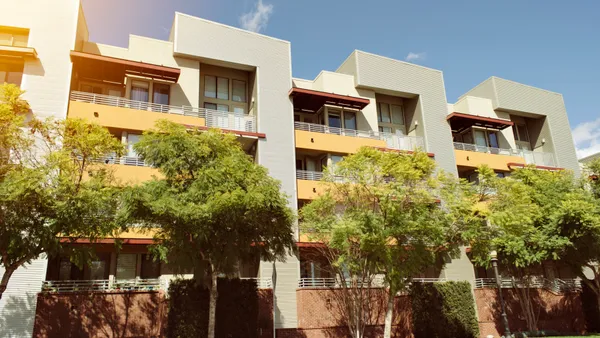Rental dynamics are changing in Sun Belt markets. Notably, Class A apartments aren’t showing the rent rate growth of older properties that are lower on the asset-quality spectrum, a trend noted during MAA’s earnings call last week.
“The [Class] B's are still outperforming a little bit,” said Tim Argo, chief strategy and analysis officer for the Memphis, Tennessee-based REIT on its second-quarter 2023 earnings call. “I would call it a 40- to 50-basis-point gap between how we would define A’s versus B’s. That's pretty consistent on the new lease side and the renewal side.”
Argo credits new supply as the reason behind this phenomenon. As more new Class A apartments come online, it squeezes the existing properties at that asset level.
“In most markets, the supply coming in hasn't been quite as impactful on some of the more B assets,” Argo said. “They’ve typically been at a much higher price, more urban-style assets and at a much higher rent than particularly some of the B assets.”
In addition to changing rental dynamics, here are three other major takeaways from MAA’s Q2 earnings call:
Pricing remains strong
MAA saw occupancy decline both year over year and from Q1 2023. But with rents going up 9.3%, management seemed happy with the trade-off. MAA increased its rental guidance by 25 basis points to 7.25%. However, it decreased its occupancy guidance by 30 bps to 95.5% for the year.
MAA executives pointed out that demand is still increasing in its markets.
“Thirteen percent of leases that we wrote in Q2 are for people moving into the Sun Belt for the first time,” CEO Eric Bolton said. “That compares to 15% to 16% during the peak of COVID. So, while it has moderated just a little bit, it's still well above where it was before COVID started.”
Although supply is a concern, particularly in Austin, Texas, and Phoenix, Bolton noted that MAA’s rents are roughly 20% lower than this new competition. Despite that, Alexander Goldfarb, managing director and senior research analyst of REITs, and Connor Mitchell, research analyst at investment bank and financial services company Piper Sandler, noted investor jitters after the call.
“We believe Thursday's sell-off post-earnings call is driven by the fixation on supply, which is always a Sun Belt constant, versus the strength of demand leading MAA to exceed its rent growth expectations,” the analysts wrote in a note.
Expense pressure abates
As inflation has started to wane, operating expenses for apartment companies may also be moderating. “We expect to see moderation in year-over-year growth in operating expenses as inflation pressures ease a bit and some of the efficiencies we expect to capture from new tech initiatives increasingly make an impact,” Bolton said.
Personnel, repair and maintenance and taxes represent 70% of MAA’s total operating costs. Overall, costs rose 7.2% year over year, but growth slowed in Q2. “We expect moderation for these items to continue for the remainder of the year, particularly for real estate taxes,” said CFO Al Campbell.
BY THE NUMBERS
| Category | Q2 | YOY Change |
| Property revenues | $505.5 million | 8.1% |
| Net operating income | $323.4 million | 8.6% |
| Operating expenses | $182.1 million | 7.2% |
| Funds from operations | $2.39 | 31% |
| Rent per unit | $1,673 | 9.3% |
| Occupancy rate | 95.5% | -20 bps |
SOURCE: MAA
In July, the Texas legislature passed a bill that should significantly roll back property tax hikes. A little more than 20% of the total value of MAA’s real estate sits in the Lone Star State.
“We do now also expect to see some relief on property taxes coming out of Texas, which further supports our ability to reduce our outlook for expense growth over the back half of the year,” Bolton said.
Acquisition outlook stays muted
MAA may be the largest apartment owner in the country, but it isn’t immune from the sales slowdown hitting the apartment business. The REIT lowered its acquisition guidance from $400 million to $200 million at the midpoint and its disposition outlook from $300 million to $100 million at the midpoint for 2023.
When it does add property, MAA is looking for pre-purchased development opportunities.
“We're hopeful we will be able to add additional currently unidentified development opportunities to our pipeline,” said A. Bradley Hill, the REIT’s chief investment officer. “Any project we start over the next 12 to 18 months would likely deliver in 2026 or 2027 and should be well positioned to capitalize on what we believe is likely to be a much stronger leasing environment.”
MAA’s construction management team is currently focused on delivering six projects under development. As other developers in the Sun Belt complete projects, there could be more opportunities to buy.
“We just believe that as the elevated supply that's occurred in our market over the last two years begins to come to market, those assets need to trade,” Hill said. “Merchant developers need to sell.”
Click here to sign up to receive multifamily and apartment news like this article in your inbox every weekday.





































